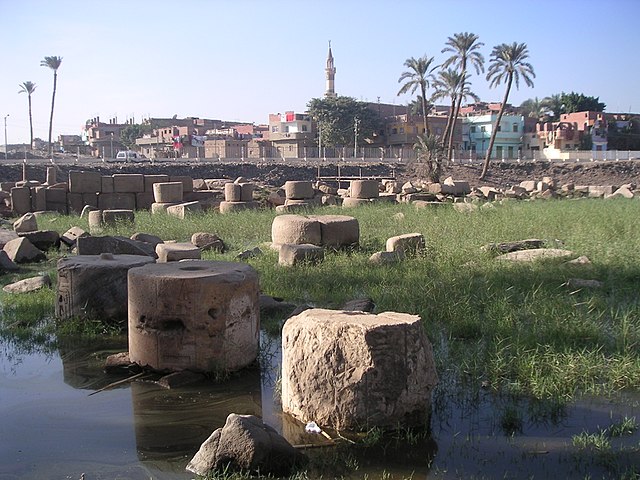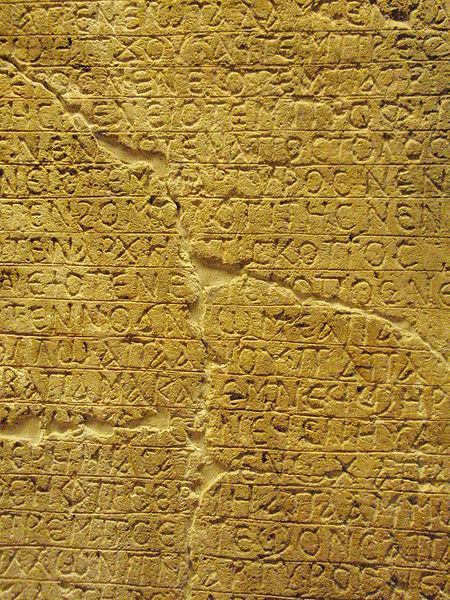Memphis, or Men-nefer, was the ancient capital of Inebu-hedj, the first nome of Lower Egypt that was known as mḥw ("North"). Its ruins are located in the vicinity of the present-day village of Mit Rahina, in markaz (county) Badrashin, Giza, Egypt. This modern name is probably derived from the late Ancient Egyptian name for Memphis mjt-rhnt meaning "Road of the Ram-Headed Sphinxes".
Ruins of the pillared hall of Ramesses II at Mit Rahina
Memphis and its necropolis Saqqara as seen from the International Space Station
Ritualistic object depicting the god Nefertem, who was mainly worshipped in Memphis, The Walters Art Museum
Rameses II flanked by Ptah and Sekhmet
Coptic is a group of closely related Egyptian dialects, representing the most recent developments of the Egyptian language, and historically spoken by the Copts, starting from the third century AD in Roman Egypt. Coptic was supplanted by Arabic as the primary spoken language of Egypt following the Arab conquest of Egypt and was slowly replaced over the centuries. Coptic has no native speakers today, although it remains in daily use as the liturgical language of the Coptic Orthodox Church and of the Coptic Catholic Church. Innovations in grammar and phonology and the influx of Greek loanwords distinguish Coptic from earlier periods of the Egyptian language. It is written with the Coptic alphabet, a modified form of the Greek alphabet with several additional letters borrowed from the Demotic Egyptian script.
Fifth–sixth century Coptic liturgic inscription from Upper Egypt.
Papyrus Bodmer VI ("Dialect P") possesses the richest of all Coptic alphabets, with 35 unique graphemes.
Sandstone stela, inscribed with Coptic text. The names Phoibammon and Abraham appear. From Egypt, find spot unknown, date known. The British Museum, London
Coptic and Arabic inscriptions in an Old Cairo church








